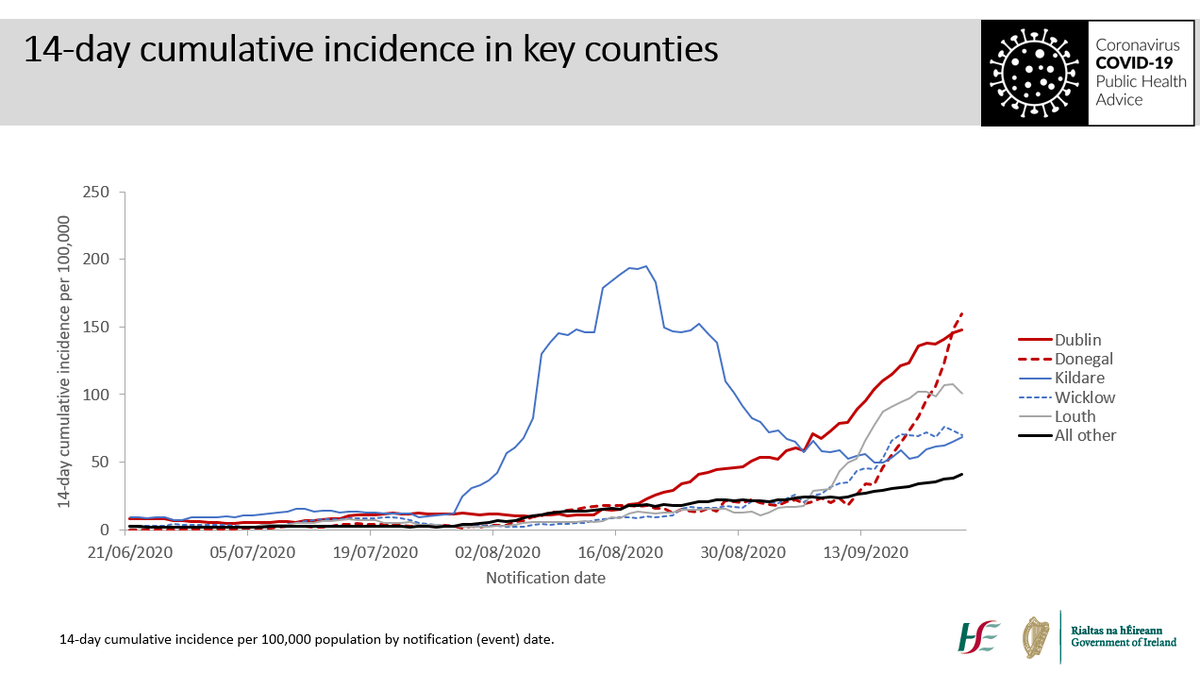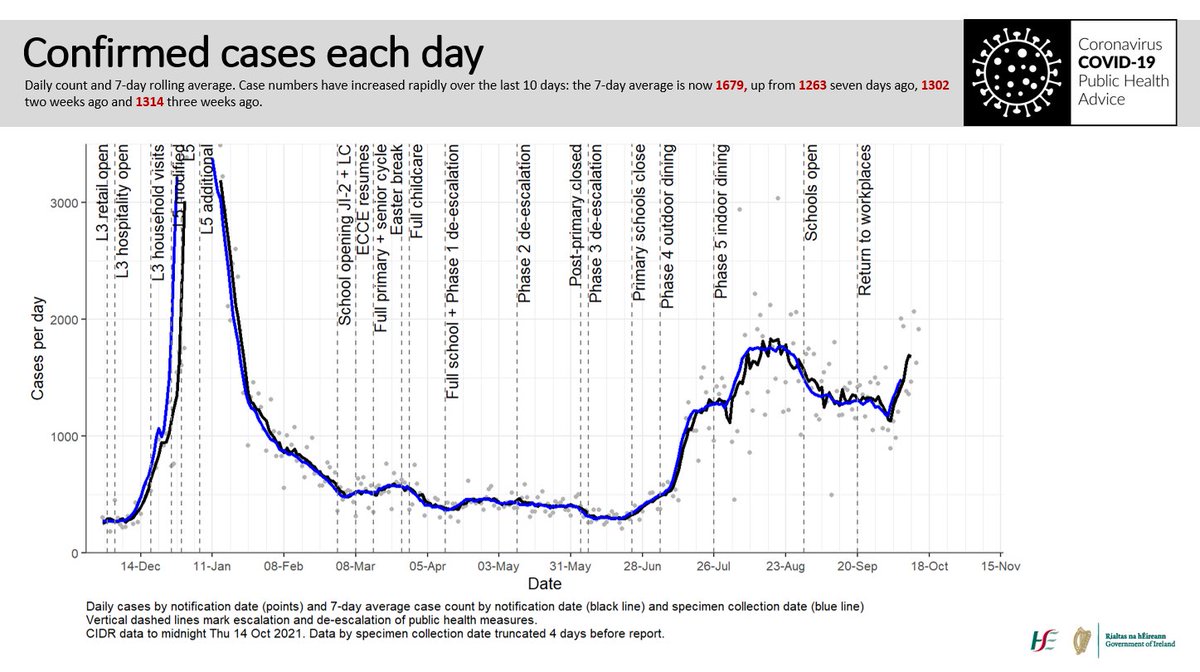How are we doing? The number of new cases per day remains high. It’s possible that incidence is rising more slowly in recent days, but it’s too early to tell. If we are starting to suppress the virus again, take this as encouragement to maintain and redouble our efforts. 1/7 

It’s important to look at Dublin separately. This is daily incidence per 100,000 population for Dublin, Kildare-Laois-Offaly, and the remaining 22 counties. If every county had an incidence of 5 per 100,000, it would translate into about 250 cases a day across the country 2/7 

Incidence remains high in Dublin, and is rising in the rest of the country. If we look at 14-day cumulative incidence for individual counties of interest, we can see high incidence in Dublin, and the recent rapid increase in Donegal 3/7
While we tend to focus on counties where incidence is increasing, it’s worth looking at counties where recent increases in incidence have been brought under control, such as Limerick, Tipperary, Leitrim, Kildare, Laois or Offaly 4/7 



The first line of defence is us, limiting our discretionary social contacts and adhering to public health guidance, along with careful case management and outbreak control by public health departments. Formal public health restrictions are not inevitable, but may be necessary 5/7 



We know we can do this. It’s hard, but limit discretionary social contacts and mixing between households. Get outdoors. Self-isolate if symptomatic, get tested, restrict our movements when required. #holdfirm on hand hygiene, physical distancing, and face coverings. 6/7
Sincerest thanks to colleagues in @hpscirleand and public health departments who provide, in near-real-time seven days a week, the surveillance data on which these analyses and the overall strategy policy decisions are based 7/7
...@hpscireland !
• • •
Missing some Tweet in this thread? You can try to
force a refresh





















